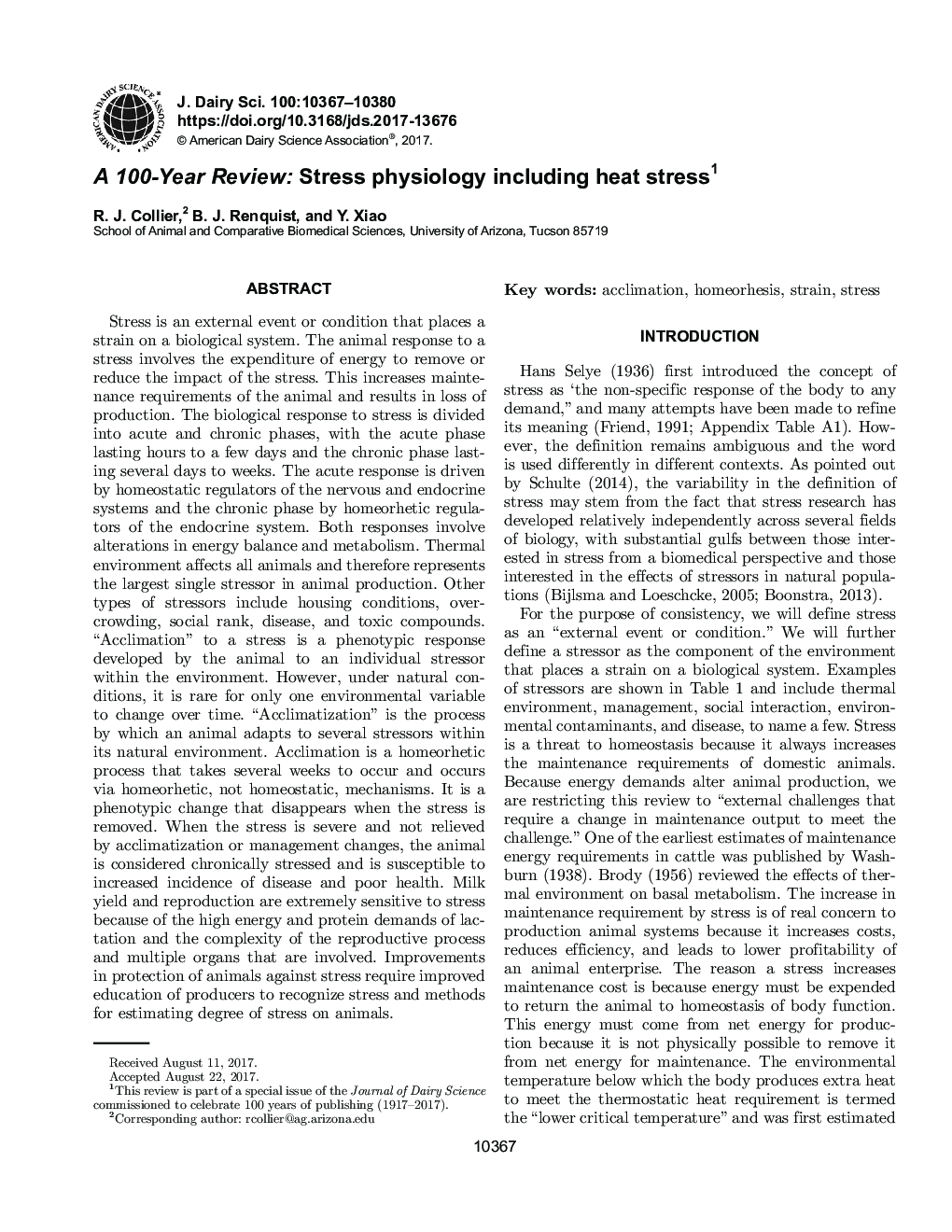| کد مقاله | کد نشریه | سال انتشار | مقاله انگلیسی | نسخه تمام متن |
|---|---|---|---|---|
| 8501821 | 1553845 | 2017 | 14 صفحه PDF | دانلود رایگان |
عنوان انگلیسی مقاله ISI
A 100-Year Review: Stress physiology including heat stress
ترجمه فارسی عنوان
یک مرور 100 ساله: فیزیولوژی استرس از جمله استرس گرما
دانلود مقاله + سفارش ترجمه
دانلود مقاله ISI انگلیسی
رایگان برای ایرانیان
موضوعات مرتبط
علوم زیستی و بیوفناوری
علوم کشاورزی و بیولوژیک
علوم دامی و جانورشناسی
چکیده انگلیسی
Stress is an external event or condition that places a strain on a biological system. The animal response to a stress involves the expenditure of energy to remove or reduce the impact of the stress. This increases maintenance requirements of the animal and results in loss of production. The biological response to stress is divided into acute and chronic phases, with the acute phase lasting hours to a few days and the chronic phase lasting several days to weeks. The acute response is driven by homeostatic regulators of the nervous and endocrine systems and the chronic phase by homeorhetic regulators of the endocrine system. Both responses involve alterations in energy balance and metabolism. Thermal environment affects all animals and therefore represents the largest single stressor in animal production. Other types of stressors include housing conditions, overcrowding, social rank, disease, and toxic compounds. “Acclimation” to a stress is a phenotypic response developed by the animal to an individual stressor within the environment. However, under natural conditions, it is rare for only one environmental variable to change over time. “Acclimatization” is the process by which an animal adapts to several stressors within its natural environment. Acclimation is a homeorhetic process that takes several weeks to occur and occurs via homeorhetic, not homeostatic, mechanisms. It is a phenotypic change that disappears when the stress is removed. When the stress is severe and not relieved by acclimatization or management changes, the animal is considered chronically stressed and is susceptible to increased incidence of disease and poor health. Milk yield and reproduction are extremely sensitive to stress because of the high energy and protein demands of lactation and the complexity of the reproductive process and multiple organs that are involved. Improvements in protection of animals against stress require improved education of producers to recognize stress and methods for estimating degree of stress on animals.
ناشر
Database: Elsevier - ScienceDirect (ساینس دایرکت)
Journal: Journal of Dairy Science - Volume 100, Issue 12, December 2017, Pages 10367-10380
Journal: Journal of Dairy Science - Volume 100, Issue 12, December 2017, Pages 10367-10380
نویسندگان
R.J. Collier, B.J. Renquist, Y. Xiao,
